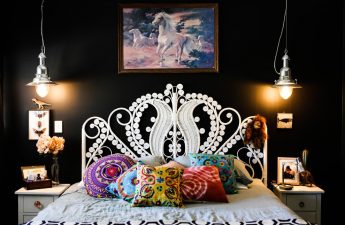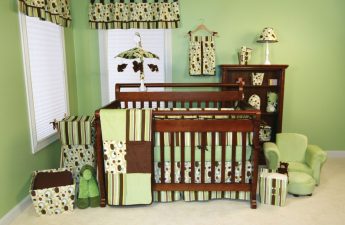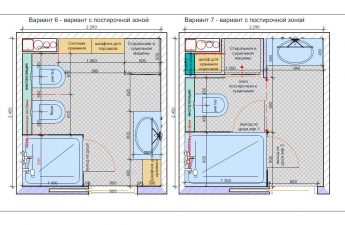On January 27th we published an article about 5 kitchentrends that will never take root in Russia. The article generated a lot of comments. Some agreed, some did not. We decided to update the article and discuss all the pressing issues in detail. Here you can see both the old article and the additions to it. Everything in italics is the additions. Everything in regular font is the old version of the article. People always want something, and manufacturers try to meet their needs (increase functionality, add technological innovations, in other words, satisfy even the most sophisticated consumer demand). This is how new trends arise. However, it also happens that the trends themselves appear, but are not applied everywhere. Why? Now Istvan Tallody, a top manager of a salon specializing in the sale of Austrian, Italian, French and . Istvan Tallody Istvan Tallody has been involved in design since 1992. Istvan has worked his way up from a designer to a top manager of a kitchen studio. He has won numerous professional awards and was invited to Miami, where he created projects for German ZEYKO kitchens and some other elite brands. In 2007, Istvan was invited to join the Kitchen Interiors company, where he still works today. kitcheninteriors.ru Now we will name all five trends one by one and explain them a little, and Istvan Tallody will explain why it will be difficult for these trends to take root in Russia... Trend No. 1 - rejection of traditional work areas The concept of a traditional kitchen triangle appeared back in 1940, when kitchens were small and appliances were very large. Today, there is a huge amount of built-in appliances in the world that are located in the kitchen space not only linearly, but also vertically. Therefore, kitchen work areas are changing not only their geometry, but also their functional purpose. “It’s all fiction, because the functional content is the main thing, and the division into zones can be anything” (Istvan Tallody, “Kitchen Interiors”). Istvan Tallody, "Kitchen Interiors":— The approach to designing each kitchen should be strictly individual. Today, manufacturers have the capabilities to not think in traditional “zones”, “triangles”, “diamonds”, and so on. But, on the other hand, the shape and size of the room are usually already defined, and taking into account ergonomics, aesthetics and the client’s personal priorities, we must find a reasonable compromise, since we are rarely given the opportunity to build a house around kitchen furniture. Trend No. 2 — dividing refrigeration zones depending on the filling Separate storage of products is one of the prerogatives of the catering industry, but now in European homes the tendency to install several refrigerators for different types of products is gaining popularity. What the guru thinks about this, read below… “Several refrigerators for zoning products - hmm - this trend will take root only in a good Jewish family,” joked Istvan Tallodi. Istvan Tallody, Kitchen Interiors: — Typically, consumers want not several refrigerators in a row, but for each one to have a larger volume — that is, their goal is not to separate products into refrigerators (no matter how correct this might be from a professional point of view), but to ensure greater flexibility — an example of this flexibility is shown to us by the company Fhiaba, which offers refrigerators with pull-out drawers that can be transformed from a refrigerator into a zero zone or a freezer at the touch of a button. Our opinion: — Of course, there are families in which each generation has its own refrigerator. And there are those who buy additional refrigerators as the family expands, so as not to buy groceries every day. But our editorial team likes another option: buy a very wide side-by-side refrigerator from SubZero — and solve all your problems for many years. It has zoning of products. And separate air supply to the refrigerator and freezer. And air purification from ethylene, microbes and mold every 20 minutes. Or, as Istvan suggests, Fhiaba refrigerators, whose lower chambers can operate as both refrigerators and freezers. There is also a freshness zone with a zero temperature and much more. And the sizes of refrigerators can also be huge.
Istvan Tallody, "Kitchen Interiors":— The approach to designing each kitchen should be strictly individual. Today, manufacturers have the capabilities to not think in traditional “zones”, “triangles”, “diamonds”, and so on. But, on the other hand, the shape and size of the room are usually already defined, and taking into account ergonomics, aesthetics and the client’s personal priorities, we must find a reasonable compromise, since we are rarely given the opportunity to build a house around kitchen furniture. Trend No. 2 — dividing refrigeration zones depending on the filling Separate storage of products is one of the prerogatives of the catering industry, but now in European homes the tendency to install several refrigerators for different types of products is gaining popularity. What the guru thinks about this, read below… “Several refrigerators for zoning products - hmm - this trend will take root only in a good Jewish family,” joked Istvan Tallodi. Istvan Tallody, Kitchen Interiors: — Typically, consumers want not several refrigerators in a row, but for each one to have a larger volume — that is, their goal is not to separate products into refrigerators (no matter how correct this might be from a professional point of view), but to ensure greater flexibility — an example of this flexibility is shown to us by the company Fhiaba, which offers refrigerators with pull-out drawers that can be transformed from a refrigerator into a zero zone or a freezer at the touch of a button. Our opinion: — Of course, there are families in which each generation has its own refrigerator. And there are those who buy additional refrigerators as the family expands, so as not to buy groceries every day. But our editorial team likes another option: buy a very wide side-by-side refrigerator from SubZero — and solve all your problems for many years. It has zoning of products. And separate air supply to the refrigerator and freezer. And air purification from ethylene, microbes and mold every 20 minutes. Or, as Istvan suggests, Fhiaba refrigerators, whose lower chambers can operate as both refrigerators and freezers. There is also a freshness zone with a zero temperature and much more. And the sizes of refrigerators can also be huge.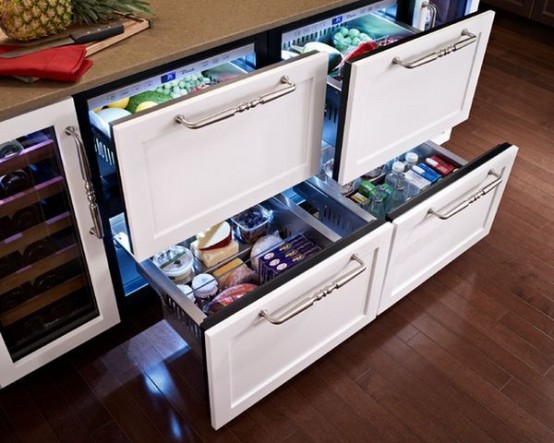 Тренд № 3 — переход к индукционным печам Индукционные печи — следующая ступень эволюции кухонных плит. Они и времени на разогрев конфорки не требуют, и программ приготовления пищи имеют несколько, и даже работать без посуды, поставленной на конфорку, не будут. Но что скажет по поводу этих чудесных плит Иштван? «Индукционные печи — тренд, объявленный производителями. Многие потребители их вообще опасаются. Потому что даже посуда при использовании этих плит нужна специальная (та, которая намагничивается, имеет антипригарное покрытие). Люди не представляют себе, чем чреват их выбор, ведь необходима также и дополнительная вентиляция, а электрическая нагрузка на провода и так очень большая» (Иштван Таллоди, «Кухонные интерьеры»). Редакция приносит свои извинения читателям и Иштвану Таллоди, первоначально в статье говорилось что посуда «НЕ намагничивается», это, конечно же, было опечаткой, которую все грамотные люди поняли адекватно. Иштван Таллоди, «Кухонные интерьеры»: — Многие опасаются индукции, считая, что для неё нужна специальная посуда. На самом деле любая современная посуда из нержавеющей стали подходит, и существуют ещё сковороды-переходники для посуды, непригодной для индукции (не намагничивающейся). Также при выборе индукционных плит стоит учесть необходимость дополнительных зазоров для вентиляции (для вентиляционных решеток в цоколе кухни, а в некоторых случаях — для вентиляционной щели прямо под столешницей), а ещё быть готовым дополнительному шуму. Также покупателей иногда смущают электромагнитные поля под варочной поверхностью. Но по моему опыту скажу, что клиенты, которые уже пользуются индукционной варочной панелью, в следующий раз выберут опять её, ибо всё это дело привычки. Наше мнение: — Так как аудитория нашего издания — около полумиллиона читателей, и добрая половина из них живёт за пределами Москвы и Московской области, мы искренне считаем, что пока в России большая часть домов газифицирована, тренд с индукционными плитами массово не приживётся. Майк Шилов, дизайнер интерьеров: — Индукция и раздельные холодильные зоны у меня в каждом проекте. И вы забыли сказать о раздельном сборе мусора — это целая проблема. В европейских кухнях предусмотрено до четырёх контейнеров для мусора, встраиваемых под столешницу. Российские же клиенты неизменно просят заменить их одним большим, и это иногда просто невозможно сделать — у некоторых фабрик нет альтернативной опции. Здесь я действительно чувствую разницу подходов и менталитетов. Инга Ажгирей, дизайнер интерьеров: — Индукционные плиты хороши, красивы, безопасны и умны. В семье с шаловливыми детишками она точно будет принята на ура. Мы такую панель на двух пользователей взяли на дачу — на случай, если кончится газовый баллон, встроили в переносную столешницу, чтобы можно было на веранду выносить. Летом, когда надо что-то оперативно разогреть в жару — идеальный вариант. Хотя мне газовая плита кажется очень уютной, домашней. Но тут вопрос габаритов кухни и пожеланий заказчиков. Ещё меня покорила английская чугунная плита-печь AGA, в которой получаются потрясающие супы и каши. Вообще эта печка для тех, кто любит очень много готовить. Иначе нет смысла её ставить — слишком дорогое удовольствие.
Тренд № 3 — переход к индукционным печам Индукционные печи — следующая ступень эволюции кухонных плит. Они и времени на разогрев конфорки не требуют, и программ приготовления пищи имеют несколько, и даже работать без посуды, поставленной на конфорку, не будут. Но что скажет по поводу этих чудесных плит Иштван? «Индукционные печи — тренд, объявленный производителями. Многие потребители их вообще опасаются. Потому что даже посуда при использовании этих плит нужна специальная (та, которая намагничивается, имеет антипригарное покрытие). Люди не представляют себе, чем чреват их выбор, ведь необходима также и дополнительная вентиляция, а электрическая нагрузка на провода и так очень большая» (Иштван Таллоди, «Кухонные интерьеры»). Редакция приносит свои извинения читателям и Иштвану Таллоди, первоначально в статье говорилось что посуда «НЕ намагничивается», это, конечно же, было опечаткой, которую все грамотные люди поняли адекватно. Иштван Таллоди, «Кухонные интерьеры»: — Многие опасаются индукции, считая, что для неё нужна специальная посуда. На самом деле любая современная посуда из нержавеющей стали подходит, и существуют ещё сковороды-переходники для посуды, непригодной для индукции (не намагничивающейся). Также при выборе индукционных плит стоит учесть необходимость дополнительных зазоров для вентиляции (для вентиляционных решеток в цоколе кухни, а в некоторых случаях — для вентиляционной щели прямо под столешницей), а ещё быть готовым дополнительному шуму. Также покупателей иногда смущают электромагнитные поля под варочной поверхностью. Но по моему опыту скажу, что клиенты, которые уже пользуются индукционной варочной панелью, в следующий раз выберут опять её, ибо всё это дело привычки. Наше мнение: — Так как аудитория нашего издания — около полумиллиона читателей, и добрая половина из них живёт за пределами Москвы и Московской области, мы искренне считаем, что пока в России большая часть домов газифицирована, тренд с индукционными плитами массово не приживётся. Майк Шилов, дизайнер интерьеров: — Индукция и раздельные холодильные зоны у меня в каждом проекте. И вы забыли сказать о раздельном сборе мусора — это целая проблема. В европейских кухнях предусмотрено до четырёх контейнеров для мусора, встраиваемых под столешницу. Российские же клиенты неизменно просят заменить их одним большим, и это иногда просто невозможно сделать — у некоторых фабрик нет альтернативной опции. Здесь я действительно чувствую разницу подходов и менталитетов. Инга Ажгирей, дизайнер интерьеров: — Индукционные плиты хороши, красивы, безопасны и умны. В семье с шаловливыми детишками она точно будет принята на ура. Мы такую панель на двух пользователей взяли на дачу — на случай, если кончится газовый баллон, встроили в переносную столешницу, чтобы можно было на веранду выносить. Летом, когда надо что-то оперативно разогреть в жару — идеальный вариант. Хотя мне газовая плита кажется очень уютной, домашней. Но тут вопрос габаритов кухни и пожеланий заказчиков. Ещё меня покорила английская чугунная плита-печь AGA, в которой получаются потрясающие супы и каши. Вообще эта печка для тех, кто любит очень много готовить. Иначе нет смысла её ставить — слишком дорогое удовольствие. 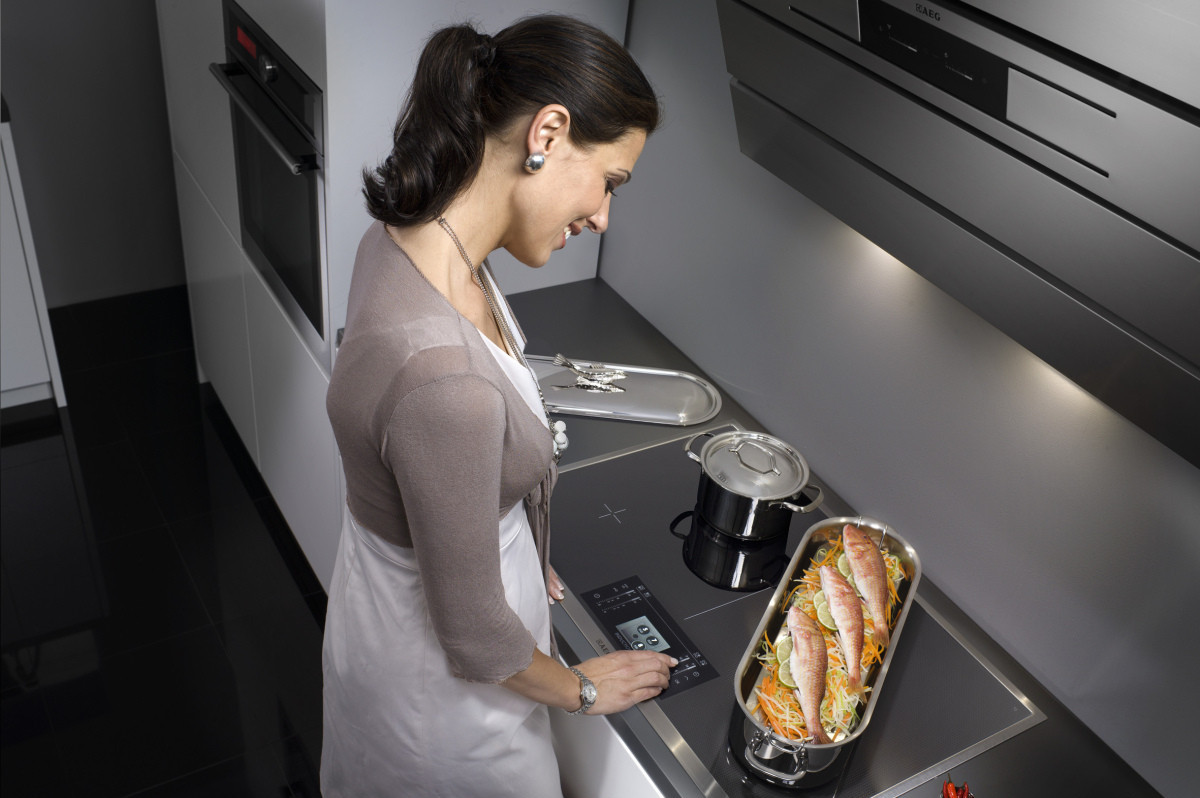 Trend #4 - transition in kitchen finishing fromstainless steel to graphite coatings A win-win color option for the kitchen is a graphite-colored coating. They can be either stone-blue or pastel gray. Today, the graphite palette is very popular in the decoration of European kitchens. “I would not say that graphite is so popular in kitchen decoration now, but quartz is another matter. Quartz countertops, for example, are unusually durable and reliable” (Istvan Tallodi). Istvan Tallodi, “Kitchen Interiors”: - In our showroom, we have kitchens in dark gray tones, this is really popular. And concrete, ceramics and imitation stone are becoming popular among materials.
Trend #4 - transition in kitchen finishing fromstainless steel to graphite coatings A win-win color option for the kitchen is a graphite-colored coating. They can be either stone-blue or pastel gray. Today, the graphite palette is very popular in the decoration of European kitchens. “I would not say that graphite is so popular in kitchen decoration now, but quartz is another matter. Quartz countertops, for example, are unusually durable and reliable” (Istvan Tallodi). Istvan Tallodi, “Kitchen Interiors”: - In our showroom, we have kitchens in dark gray tones, this is really popular. And concrete, ceramics and imitation stone are becoming popular among materials.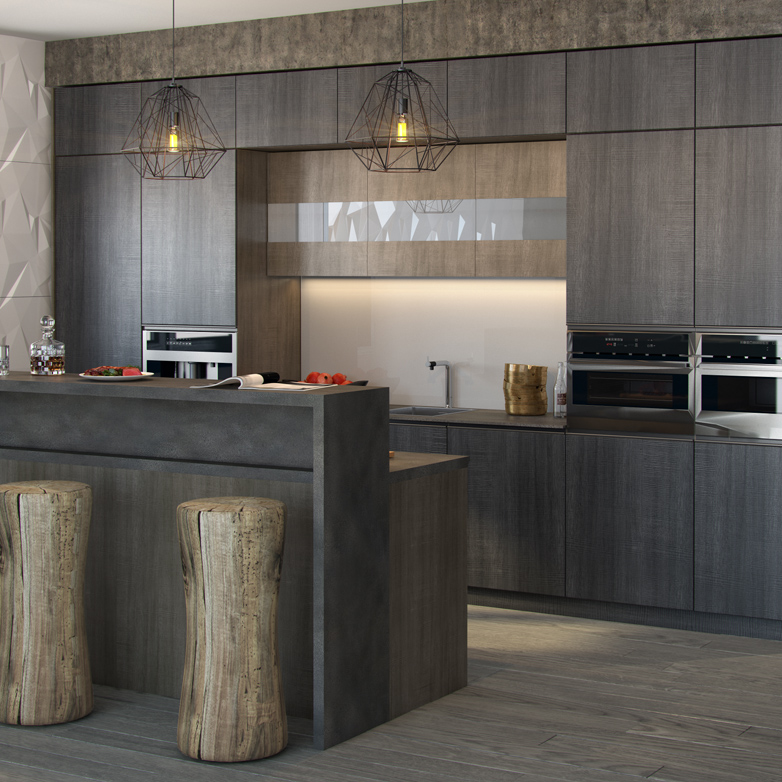 Trend #5: Hinged Door Ovens(French-door wall ovens) The trend of using ovens with hinged doors came from Europe, and now this popularity is experiencing a second wave. After all, as we know, everything new is long forgotten old. However, what is good for a European may not satisfy a Russian person... "I am convinced that ovens with hinged doors will never become a trend in Russia. Simply because we are not Europe" (Istvan Tallody). Istvan Tallody, "Kitchen Interiors": - Let's now talk specifically about double-leaf hinged ovens (French door oven): if they were wide, 120-122 cm, it would be better, and also for the door to open downwards. Opening the door to the left or right is also not bad (with a width of 70-75 cm). But opening the doors in both directions seems impractical to me.
Trend #5: Hinged Door Ovens(French-door wall ovens) The trend of using ovens with hinged doors came from Europe, and now this popularity is experiencing a second wave. After all, as we know, everything new is long forgotten old. However, what is good for a European may not satisfy a Russian person... "I am convinced that ovens with hinged doors will never become a trend in Russia. Simply because we are not Europe" (Istvan Tallody). Istvan Tallody, "Kitchen Interiors": - Let's now talk specifically about double-leaf hinged ovens (French door oven): if they were wide, 120-122 cm, it would be better, and also for the door to open downwards. Opening the door to the left or right is also not bad (with a width of 70-75 cm). But opening the doors in both directions seems impractical to me.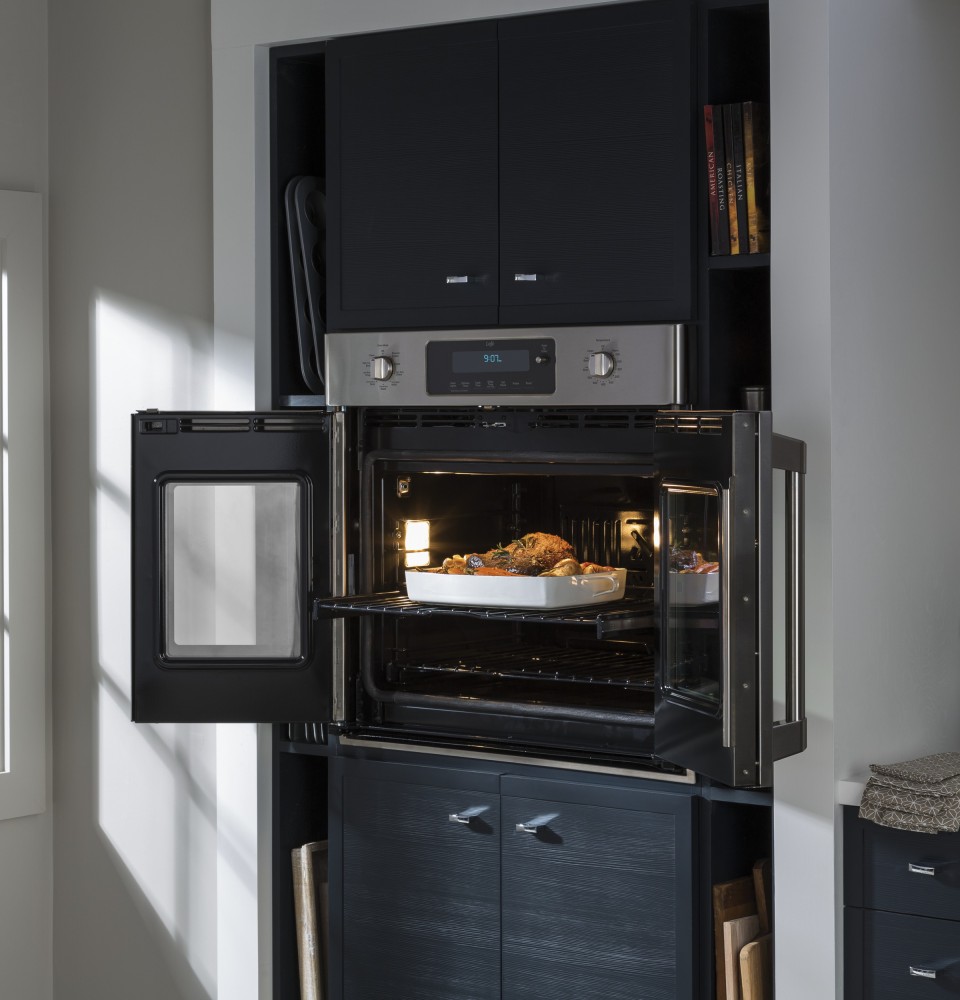 Sophie Moo, interior designer:— However, as I see it, the article has been resonant. As a practicing designer, I observe the situation from the inside. I see what clients ask for, what factories offer (not just one or two salons, but in general — both Russian and foreign brands). And I also reject the word "trend". It is fashionable, but does not convey reality. There are some changes in requests, in offers, but "trend of the season" for this huge area is, in my opinion, just a loud word. That is probably why some misconceptions have crept into the text (again, in my opinion). We have been installing divided refrigerators for a long time (in some projects even 2+1 — very convenient!), I work with induction almost all the time (almost all saucepans are suitable for it, and families with children especially like it). If I were writing about trends in the visual range of kitchens, I would say that advanced clients who prefer modern styles are actively choosing (asking for, agreeing on) kitchen-walls (when a row of facades merges with the surface and does not reveal itself as a kitchen) - both in the expensive and budget segments; they really like concrete and its imitations, multiple breakdowns and interesting internal hidden elements (drawers behind one facade, full-length pull-out sections, doors that retract into the wall).
Sophie Moo, interior designer:— However, as I see it, the article has been resonant. As a practicing designer, I observe the situation from the inside. I see what clients ask for, what factories offer (not just one or two salons, but in general — both Russian and foreign brands). And I also reject the word "trend". It is fashionable, but does not convey reality. There are some changes in requests, in offers, but "trend of the season" for this huge area is, in my opinion, just a loud word. That is probably why some misconceptions have crept into the text (again, in my opinion). We have been installing divided refrigerators for a long time (in some projects even 2+1 — very convenient!), I work with induction almost all the time (almost all saucepans are suitable for it, and families with children especially like it). If I were writing about trends in the visual range of kitchens, I would say that advanced clients who prefer modern styles are actively choosing (asking for, agreeing on) kitchen-walls (when a row of facades merges with the surface and does not reveal itself as a kitchen) - both in the expensive and budget segments; they really like concrete and its imitations, multiple breakdowns and interesting internal hidden elements (drawers behind one facade, full-length pull-out sections, doors that retract into the wall).
Update: 5 Kitchen Trends of 2016 That Are Currently Being Discussed on Facebook – etk-fashion.com

